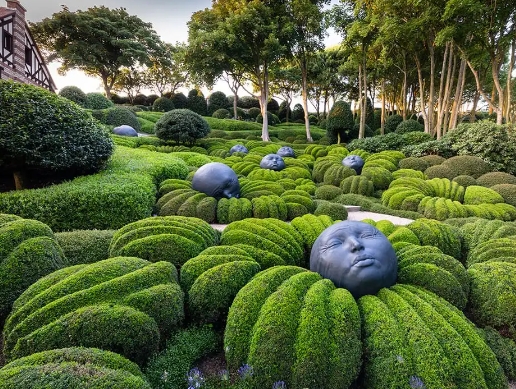In recent years, the role of landscape architects has gained prominence as we seek to create sustainable, beautiful, and functional outdoor spaces. These professionals not only shape our parks and gardens but also significantly influence urban environments and ecological health. In this article, we will explore some of the most influential landscape architects today, highlighting their innovative designs and contributions to the field.
The Importance of Landscape Architecture
Landscape architecture is about more than just aesthetics; it merges design with ecology, ensuring that outdoor spaces are both visually appealing and environmentally friendly. As urban areas continue to expand, the work of landscape architects becomes increasingly critical. They help mitigate issues like climate change, air quality, and biodiversity loss by incorporating green spaces into cityscapes. From revitalizing derelict urban areas to designing serene parks, these professionals play a vital role in enhancing the quality of life for communities worldwide.
Highlighted Pioneers of Landscape Architecture
One of the most prominent figures in contemporary landscape architecture is Piet Oudolf. Known for his impactful designs that emphasize perennial plantings, Oudolf’s work is both artistic and ecologically sound. His designs, such as the High Line in New York City, demonstrate a unique ability to blend natural beauty with urban environments. Oudolf advocates for using native plants, which require less maintenance and contribute to local biodiversity. His philosophy encourages us to appreciate the seasonal changes in landscapes, promoting a deeper connection to nature.
Another notable landscape architect is Thomas Woltz, the principal of Nelson Byrd Woltz Landscape Architects. His firm is celebrated for integrating cultural and historical contexts into their designs. Woltz’s work on projects like the Montpelier estate in Virginia showcases his expertise in habitat restoration and sustainable land management. His approach often involves collaborative processes, engaging local communities and stakeholders to ensure that landscapes reflect their unique identities and needs. Woltz’s dedication to ecological stewardship reinforces the idea that responsible design can harmonize human use with nature.
Innovative Approaches and Emerging Trends
Today’s landscape architects are also addressing pressing environmental challenges through innovative techniques. For instance, the use of green roofs and urban farming initiatives demonstrates a commitment to sustainability. Designers like Kate Orff, known for her work with SCAPE, are pioneering projects that enhance urban resilience. Her designs often incorporate water management strategies to combat flooding while creating interactive public spaces that facilitate community engagement.
Moreover, the rise of technology in landscape architecture is shaping how these professionals operate. Applications of Geographic Information Systems (GIS) and drone technology allow for precise planning and maintenance of landscapes. These tools enhance the ability to analyze various data points, ensuring that decisions made are rooted in solid evidence and ecological understanding. The future of landscape architecture promises to be not only more sustainable but also more connected to the communities it serves.
In conclusion, the contributions of prominent landscape architects today extend far beyond mere aesthetics. They are pivotal in creating spaces that are environmentally sustainable, culturally relevant, and community-focused. As we become increasingly aware of our impact on the planet, the expertise of landscape architects will be essential in guiding us toward a greener future. If you’re inspired by their work, consider researching local projects or even pursuing a deeper understanding of landscape architecture—there are many ways to engage with this dynamic field!

